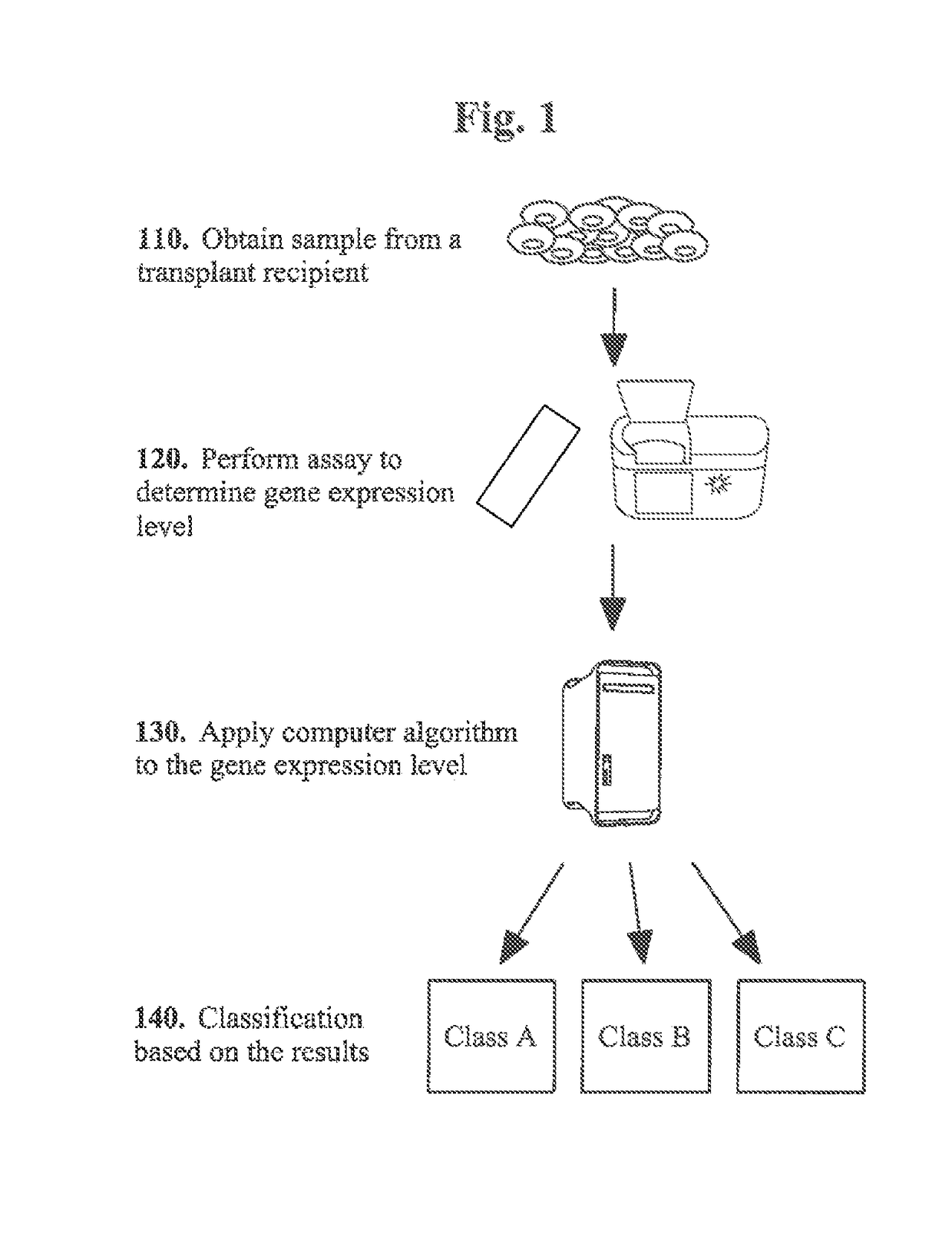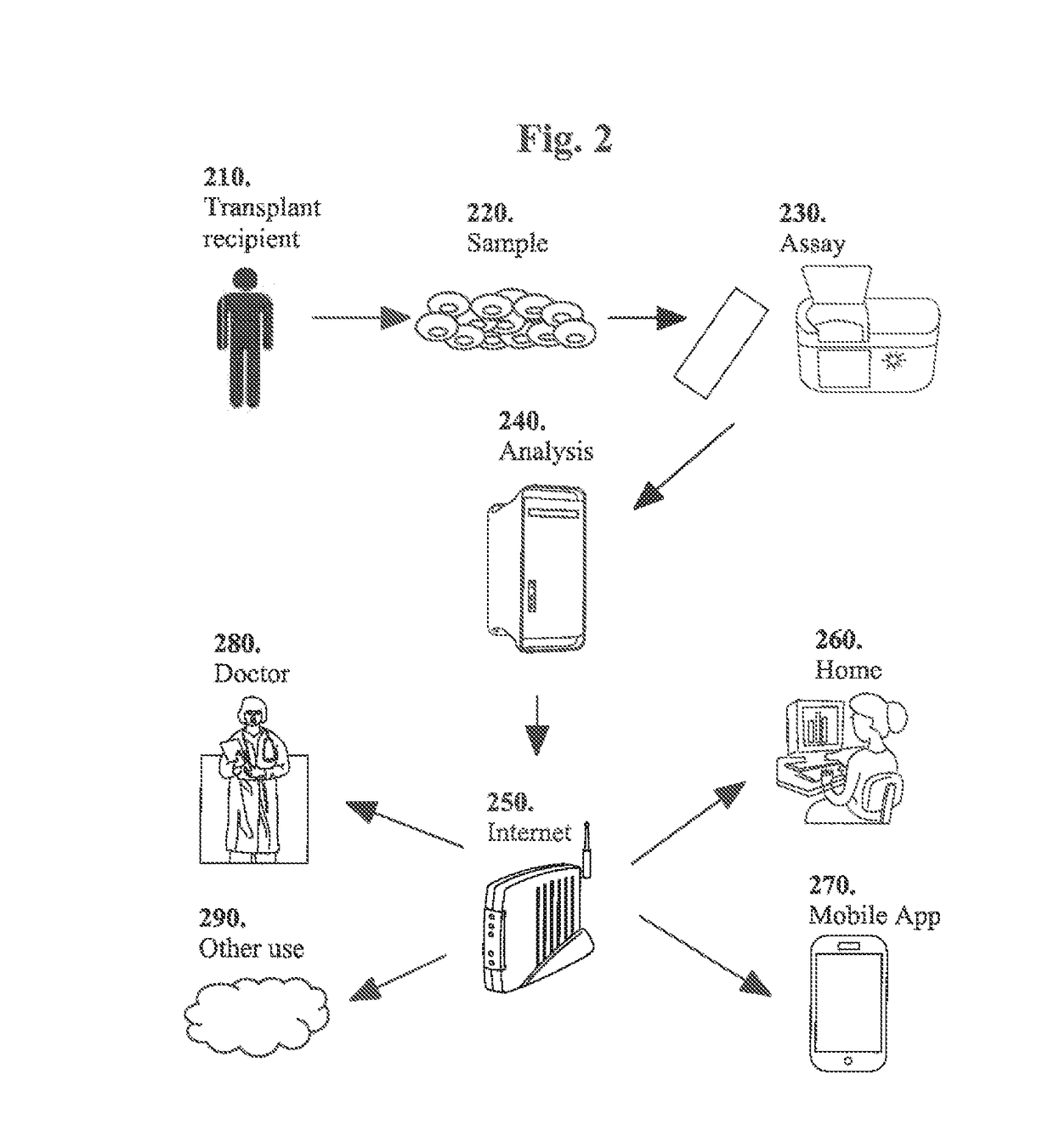Molecular signatures for distinguishing liver transplant rejections or injuries
a liver transplant and molecular signature technology, applied in the field of molecular signatures for distinguishing liver transplant rejections or injuries, can solve the problems of poor transplantation survival in hcv-infected recipients, graft loss in some patients, and inaccurate organ biopsy results
- Summary
- Abstract
- Description
- Claims
- Application Information
AI Technical Summary
Benefits of technology
Problems solved by technology
Method used
Image
Examples
example 1
n Signatures to Distinguish Liver Transplant Injuries
[0101]Biomarker profiles diagnostic of specific types of graft injury post-liver transplantation (LT), such as acute rejection (AR), hepatitis C virus recurrence (HCV-R), and other causes (acute dysfunction no rejection / recurrence; ADNR) could enhance the diagnosis and management of recipients. Our aim was to identify diagnostic genomic (mRNA) signatures of these clinical phenotypes in the peripheral blood and allograft tissue.
[0102]Patient Populations: The study population consisted of 114 biopsy-documented Liver PAXgene whole blood samples comprised of 5 different phenotypes: AR (n=25), ADNR (n=16), HCV(n=36), HCV+AR (n=13), and TX (n=24).
[0103]Gene Expression Profiling and Analysis: All samples were processed on the Affymetrix HG-1)133 PM only peg microarrays. To eliminate low expressed signals we used a signal filter cut-off that was data dependent, and therefore expression signals <Log 2 4.23 (median signals on all arrays) in...
PUM
| Property | Measurement | Unit |
|---|---|---|
| time | aaaaa | aaaaa |
| time | aaaaa | aaaaa |
| compatibilities | aaaaa | aaaaa |
Abstract
Description
Claims
Application Information
 Login to View More
Login to View More - R&D
- Intellectual Property
- Life Sciences
- Materials
- Tech Scout
- Unparalleled Data Quality
- Higher Quality Content
- 60% Fewer Hallucinations
Browse by: Latest US Patents, China's latest patents, Technical Efficacy Thesaurus, Application Domain, Technology Topic, Popular Technical Reports.
© 2025 PatSnap. All rights reserved.Legal|Privacy policy|Modern Slavery Act Transparency Statement|Sitemap|About US| Contact US: help@patsnap.com


